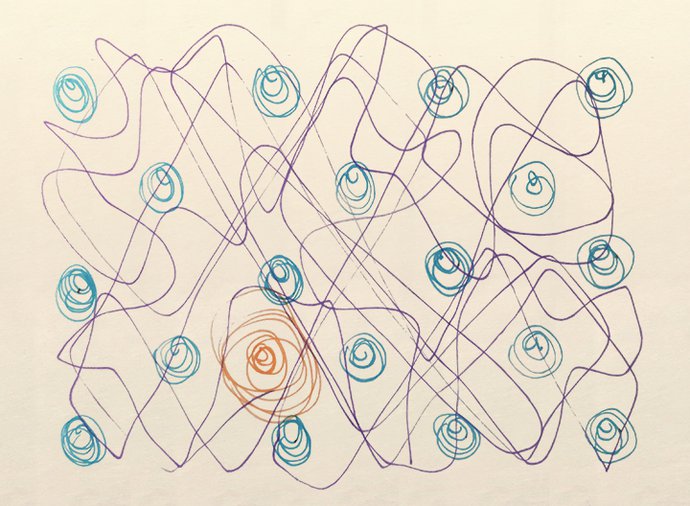Patterns of Neurons Firing Sabina Brennan

Niall McLaughlin and Yeoryia Manolopoulou speak to Professor Sabina Brennan, co-director of the Neuro-Enhancement for Independent Lives (NEIL) Research Programme at Trinity College Dublin and director of the NEIL Memory Research Unit. Sabina’s current research seeks to understand the reasons for differential decline in cognitive ageing and develop methods for the early detection of cognitive decline. She is working to find ways to ‘prevent, delay the onset of, or change the trajectory of’ dementia.
Sabina says her studies have shown that, as we age, what we fear most is losing our independence and losing our memory. She argues that loss of independence is not inevitable, and that it may be tackled through design. ‘We should be designing our societies to be inclusive, to prolong independence,’ she says; ‘we should be building buildings that carry us across our lifespan.’ Sabina believes that our failure to do so leads to the undesirable ‘segregation’ of the elderly. She argues that memory loss is not inexorable, either: ‘Dementia is not a normal part of ageing … most impairment in memory function is a consequence of disease, not age.’
Sabina emphasises the importance of modifiable lifestyle factors in determining a person’s quality of life. She lists common risk factors for dementia, such as lack of exercise, poor diet, smoking, excessive alcohol consumption, insufficient social engagement, and so on. However, she also explains the positive effects of what she calls ‘cognitive reserve’. She explains that ‘you can actually maintain your cognitive function while you have the pathology … Two people post-mortem can have the pathology of the disease – can have the plaques and tangles – one of them had full-blown dementia before they died; the other didn’t manifest any symptoms.’ We can build cognitive reserve by continually seeking to challenge our brains, to learn new skills, to do things in new ways.
Pointing to the positive effects of neurological challenges, Sabina says that the problem with residential care for people with dementia is the lack of stimulation. While she recognises that certain people, with certain forms of dementia, may require a calming, uncomplicated environment, she stresses that ‘you can’t view dementia as a singular disease’ and that other people could benefit hugely from continued interaction with a stimulating environment.
Sabina laments the ‘othering’ perspective from which dementia is often viewed and argues for the integration of dementia care into our communities: ‘If we are going to create institutions … we should care for our young children in the same places we care for our older adults.’ She says that, in her personal experience of her mother’s dementia, ‘children bring great joy’.
Discussing spatial perception, Sabina questions the notion that we conceptualise space in terms of a model. She argues that in suggesting we do so we are fabricating a construct from what is actually a process. She states that our emotions, behaviours and memories are all directed by patterns of neurons firing, and that the shape of each pattern has an association. Dementia impacts memory and behaviour by impeding this patterning. Niall asks if our reading of space is overlaid with our knowledge of our capacity for action; if our brain assesses its ability to move through a room and maps this on the model it creates of the space. Sabina says the process is ‘much more integrated’, and her discomfort with the word ‘model’ is that it is too concrete: it implies finitude, or stasis.
Niall asks for Sabina’s thoughts on why people with dementia sometimes conflate times and spaces in their minds – believing that their childhood bedroom is next door to the living room of their care home, for example. Sabina says that when someone enters residential care any brain impairment restricts their ability to engage with their new environment. ‘You can’t lay behind you memories of new places you move through,’ Niall agrees. Sabina suggests that in trying to make sense of their situation, and subconsciously seeking the comfort of home, they may overlay their understanding of their current space with familiar spaces from their past. Emphasising the notion that people with dementia are seeking the solace of home, She makes a case for the personalisation of care environments.
Yeoryia asks if a parallel may be drawn between designing for dementia and designing for education, as both cause rapid change to the structure of the mind. Sabina agrees but says that the issue with the design of care environments is that it prioritises the needs of the staff above ‘supporting and promoting activity among residents’. She stresses that we must create environments that allow people with dementia to ‘feel like they’re contributing, that they have value … We all need to have value.’
This dialogue was recorded in Sabina's office in the Lloyd Building at Trinity College Dublin